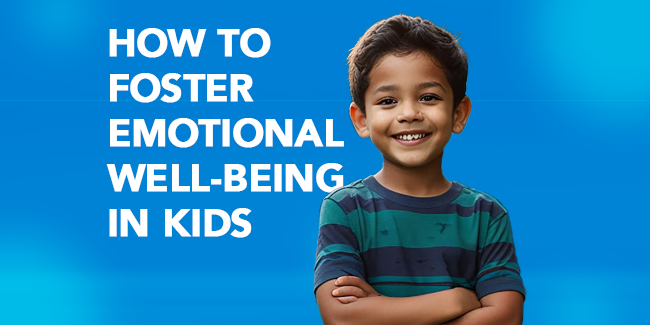Mental Health Matters: How to Foster Emotional Well-Being in Kids
Mental health is as important to a child’s development as physical health. While ensuring that children have a nutritious diet and regular exercise is often a priority, fostering emotional well-being can sometimes be overlooked. Given that one in six children aged 6–17 years in the United States experience a mental health disorder each year, promoting a strong foundation for emotional health is essential. This article explores strategies that parents, caregivers, and educators can employ to support mental health and resilience in children, helping them navigate the challenges of growing up in an ever-evolving world.
Understanding Emotional Well-Being in Children
Emotional well-being in children encompasses their ability to understand and manage emotions, build positive relationships, and cope with stress and challenges. Nurturing emotional health from an early age helps children develop self-esteem, empathy, and resilience—skills that are crucial for their overall growth and future success.
The Signs of Emotional Distress
Children may not always have the words to express how they feel, making it challenging for parents and caregivers to recognize signs of emotional distress. Changes in behavior, such as withdrawal from activities, sudden mood swings, unexplained anger, and changes in appetite or sleep patterns, can all indicate underlying emotional concerns. According to the Journal of the American Academy of Child and Adolescent Psychiatry, early intervention and open communication can mitigate long-term psychological effects.
Strategies to Foster Emotional Well-Being in Children
1. Promote Open Communication
Creating a safe space for children to express their feelings without fear of judgment is the cornerstone of emotional well-being. Encouraging children to share their thoughts and experiences helps build trust and allows them to navigate their emotions constructively. Using open-ended questions like “How did that make you feel?” or “What do you think about what happened today?” can prompt meaningful discussions.
2. Model Healthy Emotional Behaviors
Children learn emotional regulation by observing those around them. Displaying healthy coping strategies, managing stress, and discussing feelings openly show children how to handle their emotions. For instance, parents who talk about their day, including both the positive and challenging moments, set an example of how to deal with emotions.
3. Encourage Play and Creativity
Creative activities such as art, music, and imaginative play are effective outlets for children to express their emotions. Research indicates that engaging in creative play can reduce anxiety and improve emotional regulation. Providing opportunities for unstructured playtime allows children to process their feelings, explore solutions, and strengthen their emotional resilience.
4. Teach Problem-Solving Skills
Helping children develop problem-solving skills empowers them to handle difficulties independently. Teach them to break down problems into manageable steps, consider different solutions, and assess the consequences of each choice. Reinforcing this skill set not only builds confidence but also enhances their ability to manage emotions and stress.
5. Validate Their Feelings
It’s important for children to feel that their emotions are valid, even if adults might not fully understand their perspective. Acknowledging their feelings—whether they are happy, sad, or frustrated—reinforces that all emotions are natural. Statements like “I can see that you’re upset. It’s okay to feel this way” validate their experiences and encourage self-acceptance.
6. Limit Exposure to Stress and Negative Influences
Excessive exposure to negative news, conflict at home, or competitive pressure can take a toll on a child’s mental health. Creating a stable, positive environment helps children feel secure and supported. If unavoidable stressors arise, such as a family move or school change, talk openly about these changes and provide reassurance.
Building Emotional Resilience: The Path Forward
Building emotional resilience is not about shielding children from challenges but rather equipping them with the tools to handle setbacks and bounce back. Some effective ways to build resilience include:
- Helping Children Develop a Growth Mindset: Encourage children to view mistakes as opportunities to learn and grow. Reinforcing the idea that abilities and intelligence can be developed through effort fosters resilience.
- Cultivating Gratitude: Teaching children to focus on the positive aspects of their lives promotes a sense of contentment and well-being. Regularly practicing gratitude, such as noting three good things each day, can enhance emotional health.
- Creating Strong Social Connections: Children benefit from having supportive relationships with family, friends, and mentors. These connections provide a sense of belonging and a support system to turn to in times of need.
When to Seek Professional Help
While fostering emotional well-being at home is crucial, there are times when professional intervention is necessary. If a child’s emotional distress persists, significantly impacts daily functioning, or is accompanied by concerning behaviors such as self-harm or persistent sadness, it’s important to seek help from a child psychologist or counselor. Early intervention can prevent potential long-term mental health issues and provide the child with the tools they need to thrive.













